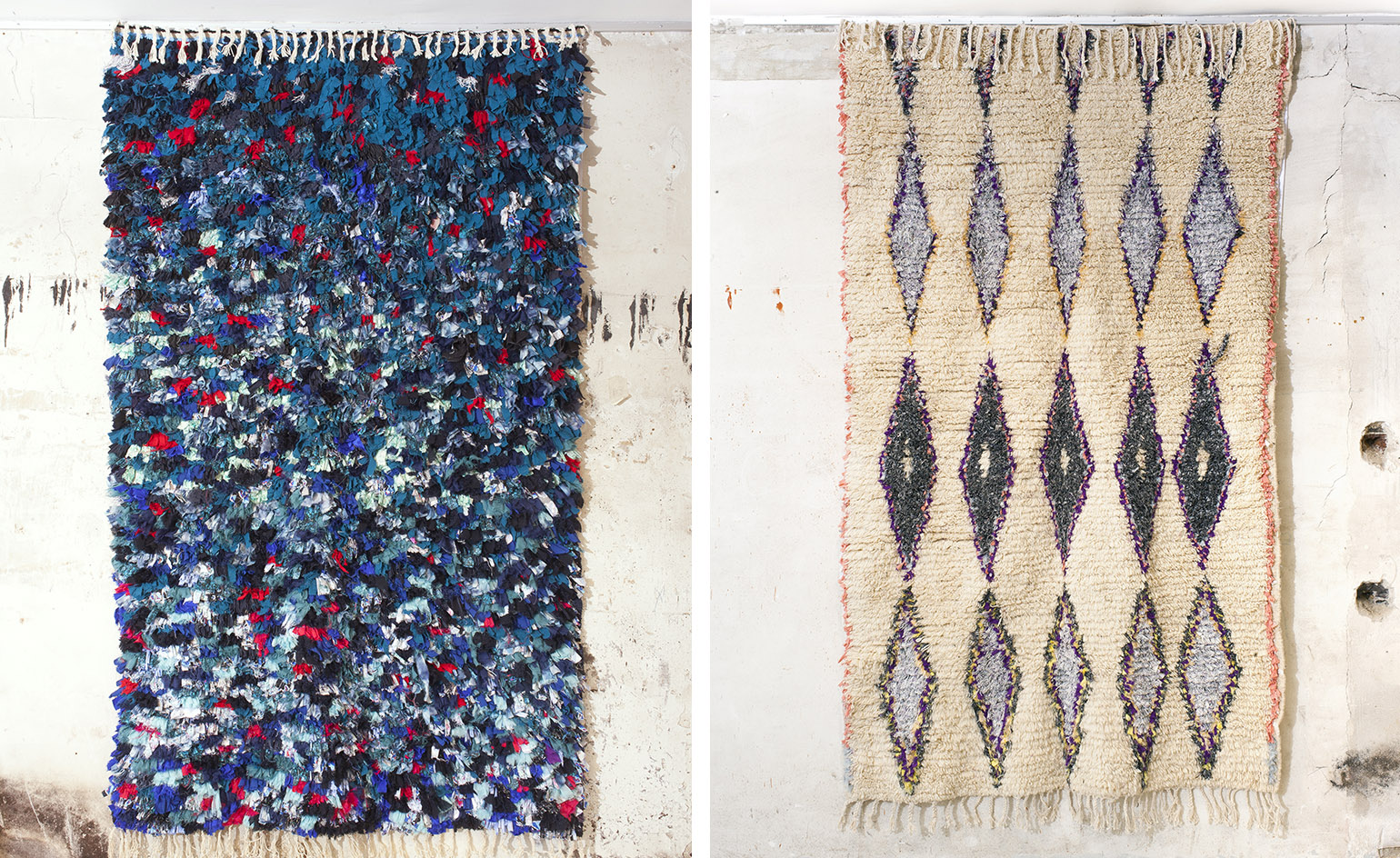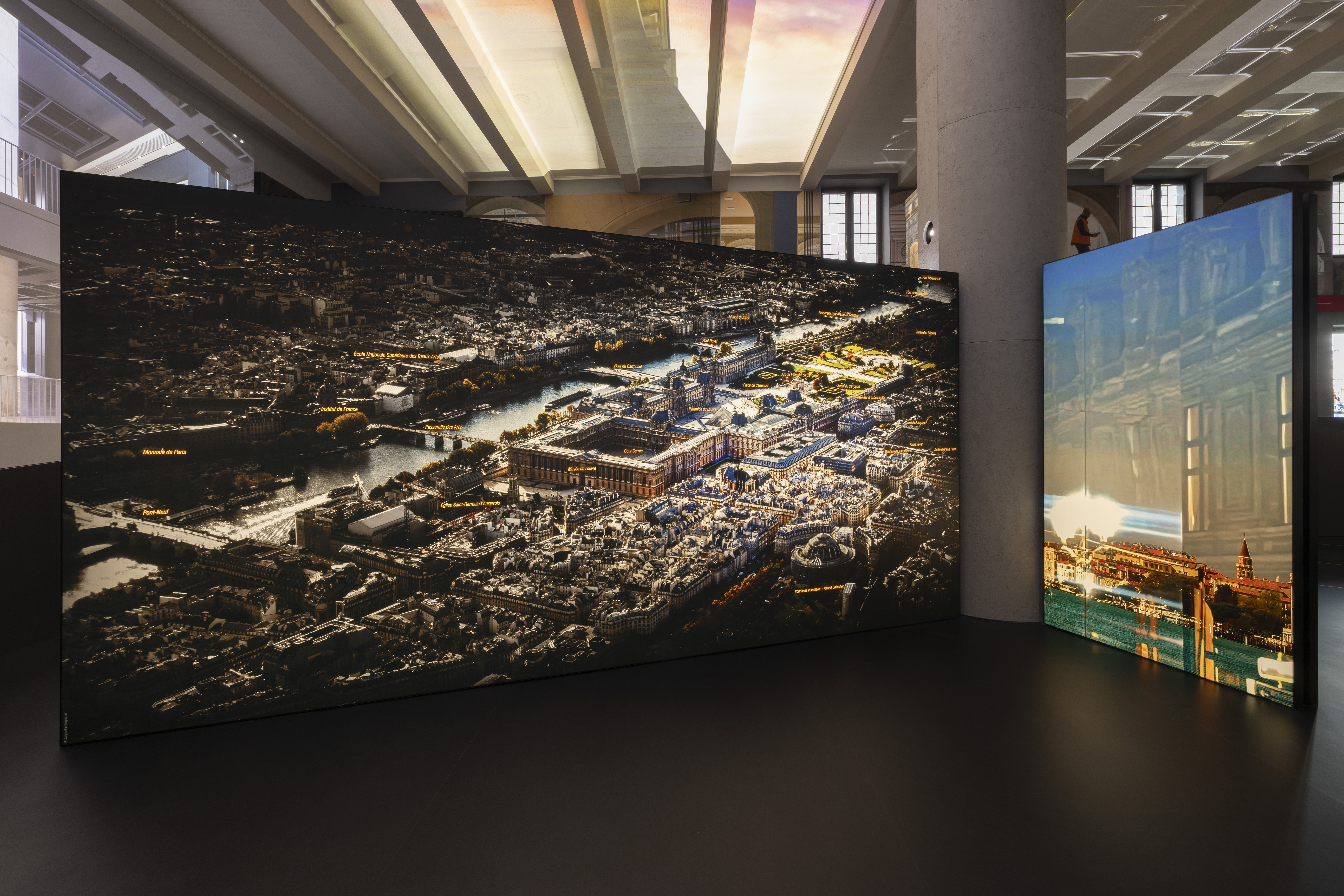A new weave: Calla Haynes repurposes fashion collections into Moroccan rugs

Woven rag rugs, as their name implies, carry humble origins. But what if the materials that marry together into such recognisably hand-crafted carpets came from a more elevated source? That’s the question at the root of ‘The Boucharouite Project’, which picks up where Calla Haynes’ fashion label left off.
Ever since 2015, when the Paris-based, Canadian designer opted to take a step back from her namesake women’s collections that featured her custom prints, she knew she wanted to transform her leftover textiles into something else. ‘My textiles were a huge investment and the dearest part of my work; there was never any question of reselling them because the prints were so personal,’ Haynes explains. She experimented with fabric-covered notebooks, followed by decorative pillows. But Moroccan Berber carpets struck her as an especially viable solution, since it emphasised resourcefulness, while updating a tradition that usually isn’t associated with luxury.

Installation view of ‘The Boucharouite Project’
Haynes, who also spends her time creating prints for Carven, Chloé and Eres, and working with emerging designers, says she never wanted to impose too much of her style on the female artisans, who she knows by name as Naima, Fatna and Efouzia. She would send a digital rendering with her suggestions for patterning, plus the fabrics required to produce each carpet. Then she would wait up to nine weeks as they spent roughly 30 to 40 hours weaving the rugs, never fully sure the outcome.
‘There’s an element of magic between what I proposed, and what comes naturally to them,’ says Haynes describing what seems more like a shared narrative than the typical collaboration. ‘Sometimes, the result has proven a surprise, but that’s part of the beauty of the project.’
So far, 13 carpets have been composed from cottons, wools, silks, jerseys, that represent various collections; she can pinpoint the Memphis-inspired print of her Chow Chow, Lily, from 2014, poking through a multicoloured pointillist rug, or else the teal crepe that dates to when she presented her collection for the first time in New York. A neon tweed that she had customised by Malhia Kent appears flamboyantly frayed amid knobs of coral pink and mint green. With 50m of fabric cut up and reassembled, what resonates is how the results still manage to keep her work intact.
Which is why she can imagine project’s potential extending beyond her own stock. In a similar vein to Viktor & Rolf’s A/W16 couture collection – which featured eccentric, voluminous jackets and jeans woven from their inventory of high-end end textiles – Haynes is confident that luxury labels could be repurposing their leftovers in artistic ways and hopes to collaborate with anyone interested to develop the idea further. In February, she visited the women and their production manager, Monsif, who are based in the region of Zarkten, 100km southeast of Marrakech (to wit, both the materials and the finished carpets travel by bus).
For now, Haynes’ accumulation of new work remains on view – and for sale – at the Berg France gallery as part of the D’Days design festival. Here, many of them are mounted vertically, almost like works that nod to arte povera. But the designer believes their right place is the floor. ‘These rugs flatten and there will always be some fraying, but that’s what gives them a special, vintage aspect,’ notes Haynes. ‘I am excited to see how they live on.’

For the collection, Haynes has repurposed leftover textiles from her fashion range

Left, ’Tapis Grisrose.’ Right, ’Tapis Noirflou’

The collection of Moroccan Berber rugs are realised in cottons, wools, silks and jerseys

Left, ’Tapis Bleu.’ Right, ’Tapis Diamonds’

Many of the rugs are are mounted vertically, almost like works that nod to arte povera

’These rugs flatten and there will always be some fraying, but that’s what gives them a special, vintage aspect,’ says Haynes
INFORMATION
’The Boucharouite Project’ is on view until 14 May. For more information, visit the Calla website
ADDRESS
Berg France
308 rue Saint Martin
75003 Paris
Wallpaper* Newsletter
Receive our daily digest of inspiration, escapism and design stories from around the world direct to your inbox.
-
 The 2025 British Pavilion in Venice offered up a Geology of Britannic Repair
The 2025 British Pavilion in Venice offered up a Geology of Britannic RepairThe 2025 British Pavilion in Venice is curated by an Anglo-Kenyan team of architects and designers; titled 'GBR: Geology of Britannic Repair', it explores the landscape of colonialism, its past, present and futures
-
 A Venice sneak peek into the new Fondation Cartier pour l’art contemporain by Jean Nouvel
A Venice sneak peek into the new Fondation Cartier pour l’art contemporain by Jean NouvelA new home for Fondation Cartier pour l’art contemporain by Jean Nouvel will open later this year in Paris; in the meantime, the Venice Architecture Biennale 2025 offered the perfect platform for a sneak preview of what's to come
-
 Let's go outside: ten outdoor furniture ranges we love
Let's go outside: ten outdoor furniture ranges we loveOur round-up of outdoor furniture brings together work by leading designers and studios, blending contemporary forms with enduring materials designed to elevate open-air living
-
 Olympics opening ceremony: a little Gaga, a lot of spectacle, and universal uplift
Olympics opening ceremony: a little Gaga, a lot of spectacle, and universal upliftHow Paris 2024’s Olympics opening ceremony set spirits – and much else – soaring, embracing the Seine, the streets and the skies. Craig McLean reports
-
 Paris Design Week 2023: the highlights
Paris Design Week 2023: the highlightsYour essential guide to Paris Design Week 2023, from Maison & Objet to Paris Déco Off, and the best things to see in town as part of Maison & Objet City
-
 Step by step: Virgil Abloh, Jaime Hayon and more rethink the ladder at Galerie Kreo, Paris
Step by step: Virgil Abloh, Jaime Hayon and more rethink the ladder at Galerie Kreo, ParisA new exhibition at Galerie Kreo, ‘Step By Step’, invites more than 20 designers to rethink the ladder’s classic design
-
 Hella Jongerius weaves the cosmos at Berlin’s Gropius Bau
Hella Jongerius weaves the cosmos at Berlin’s Gropius BauOn the occasion of her ‘Woven Cosmos’ exhibition at Berlin's Gropius Bau in Spring 2021, we talked to Hella Jongerius about textiles and weaving, sustainability in design and the effect of the pandemic on daily life
-
 Virtually experience the shapes and colours of Pierre Charpin
Virtually experience the shapes and colours of Pierre CharpinTake a digital 3D tour of Pierre Charpin’s show ‘Similitude(s)’ at Paris’ Galerie Kreo that explores colour and geometry
-
 Re-living Pierre Paulin's 1970s Paris
Re-living Pierre Paulin's 1970s ParisTake a journey to 1970s Paris with Sotheby’s celebration of the work of French designer Pierre Paulin
-
 Cultural crossings at Maison et Objet January 2020
Cultural crossings at Maison et Objet January 2020In Paris this January, Maison et Objet (17-21 January) spanned fun rides, poetic performances and a Mediterranean brand launch
-
 A new design, fashion and retail experience opens in Paris
A new design, fashion and retail experience opens in ParisNew brand La Manufacture offers French allure and Italian craft under the creative crew of Robert Acouri, Milena Laquale and Luca Nichetto